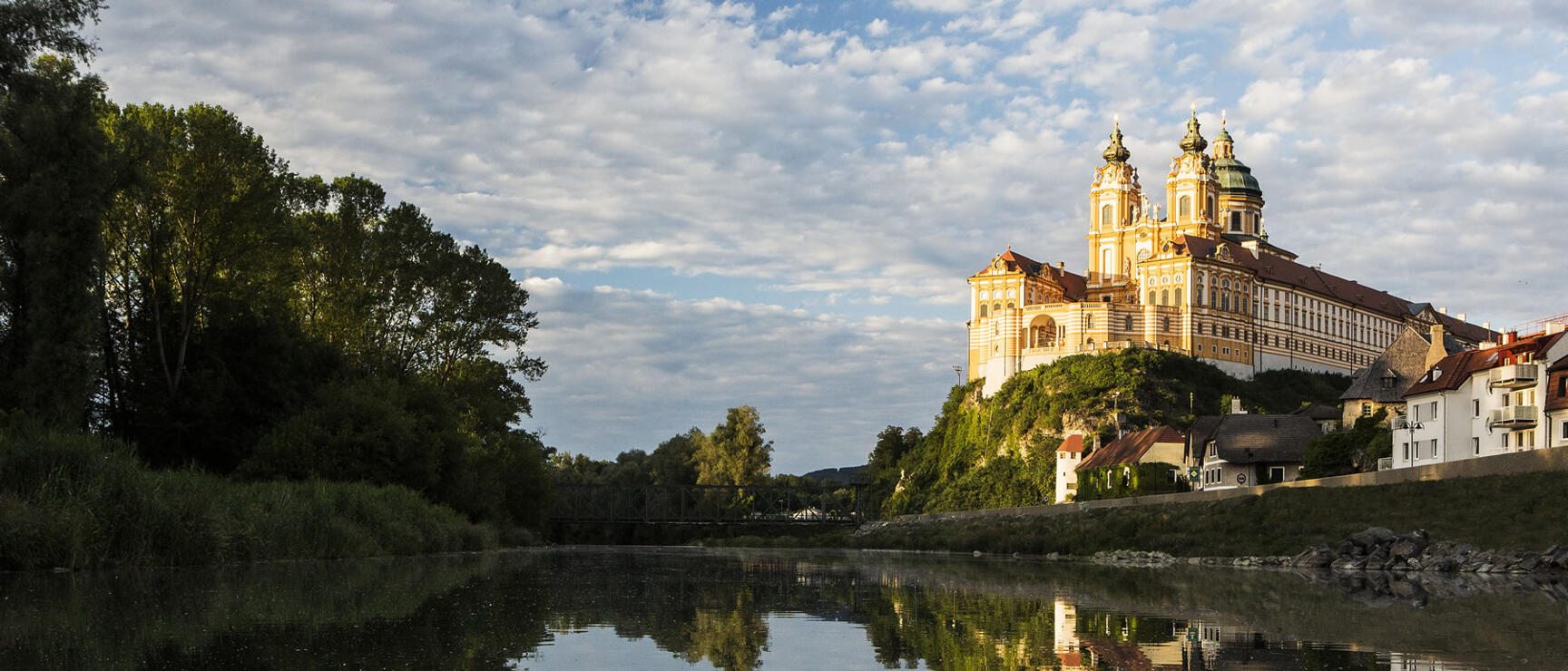What is Lower Austria known for?
Austria’s largest state, located in the northeast along the Danube, boasts a rich cultural heritage and breathtaking natural beauty. Fields, forests, river valleys, and mountain peaks – the diverse landscapes give Lower Austria its distinct and charming character. As Austria's leading wine-growing region, it is home to countless wine taverns and cellars nestled alongside hundreds of magnificent castles, fortresses, and monasteries. A vibrant cultural and arts scene adds a refreshing twist to the region’s historical treasures.
Relaxed and full of flavour
How to describe the way of life in Lower Austria in just one word? Indulgent! Every excursion here is accompanied by culinary delights. There is always a cosy wine tavern or one of the region’s beloved inns to stop at. Yet, the star of the show is the wine. Revered by the locals, wine is celebrated as the “fifth season” during the Weinherbst (Wine Autumn), an annual festival devoted to their cherished vineyards.
Lower Austria Card:
Art and culture, leisure activities for the whole family, adventure worlds - with the Lower Austria Card there's a lot to experience.
When to visit:
Seasonal highlights can be found here.
Meet Lower Austria
Top highlights
Tours
Regions
Cities and places
Top events
Famous personalities
Recipes
Unique places to stay
Climate Protection Tips
What can we do to protect biodiversity?
Respect nature. Stay on marked paths and take your rubbish with you.
Use sustainable mobility. Discover public transport or go by bike.
Be considerate of wildlife. Observe animals from a safe distance.
Enjoy consciously and organically. Choose local and sustainable food and products.
Strengthen biodiversity. Protecting and preserving biodiversity is crucial for the ecological balance.
Lower Austrian pub culture
This is fine cooking!
Lower Austria is a culinary treasure trove, where enjoying good food is part of everyday life. After all, some of the finest products thrive here: the famous apricots and wine from the Wachau, poppy seeds, herbs, and spices from the Waldviertel, as well as wine and cider from the regions named after them.
In Lower Austria, pub culture holds a special place. Whether it’s a city tavern, village inn, or fine dining restaurant, around 200 establishments have earned the distinction of "inns with pub culture." They preserve traditional dishes, create modern interpretations, and cook with regional ingredients. There’s also room for creative ideas, innovative recipes, and a fresh take on the traditional pub culture.
Plant delights with sustainability
The "Noah's Ark" show garden in Schiltern
In the show garden of "Arche Noah" in the Waldviertel, diversity is in full bloom! A guided tour through the idyllic show garden in Schiltern reveals many highlights, with the romantic 18th-century pavilion being just one of them. The garden’s produce, mainly rare varieties of fruits and vegetables, is turned into delicious treats – with the garden kitchen opening every summer. The shop also offers rare seeds and young plants for your garden or balcony.
A great tip for anyone who cares about biodiversity!
